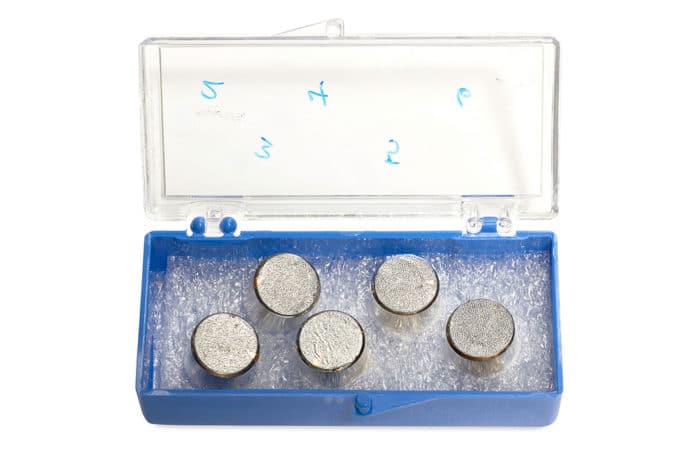The Apollo 11 mission, part of the Apollo Program (1961- 1972), landed humans on the Moon for the first time. The mission carried the first geologic samples from the Moon back to Earth.
A minuscule amount of microscopic moon dust collected during the mission has sold for half a million dollars after NASA identified the particles as part of the first lunar sample collected by astronaut Neil Armstrong.
On April 13, 2022, in New York, Bonhams auctioned the Apollo 11 moon dust for $504,375 as part of its Space History Sale. The amount fell short of Bonham’s pre-auction estimate of $800,000 to $1.2 million, including the buyer’s premium.
This sale marks the end of a complicated history for the moon dust since it arrived on Earth.
Bonhams sold the samples as NASA surrendered them, embedded in 10 mm diameter black carbon tape affixed to five scanning electron microscope aluminum sample stubs. Independent testings conducted at Bonhams request found that four of the five stubs held moon dust particles consistent with the contingency lunar sample collected by Armstrong. The fifth stub had lunar traces different from the other four, possibly due to a change in testing techniques.
Ian Ehling, Bonhams’ director of fine books and manuscripts, said, “Lot 21 shown on your screens presents a unique opportunity to own a NASA verified piece of the Apollo 11 contingency sample.”
The Apollo 11 contingency sample, which included 492 grams of material finer than one centimeter, as well as 12 rock fragments larger than 1 cm, remains in NASA’s control, as does the majority of the 842 pounds (382 kg) of lunar rocks, core samples, pebbles, sand and dust that were brought back to Earth by the six Apollo missions that landed on the Moon.
